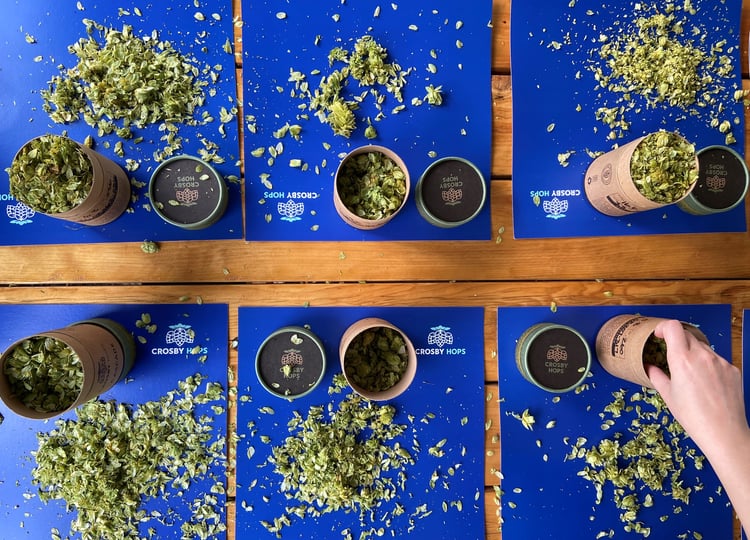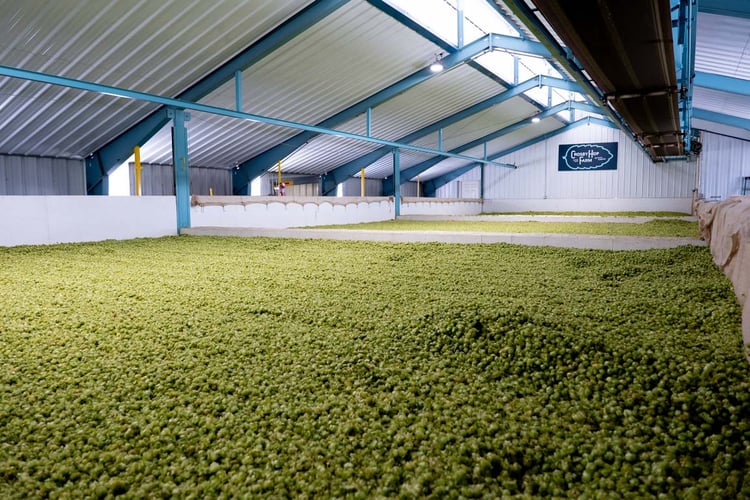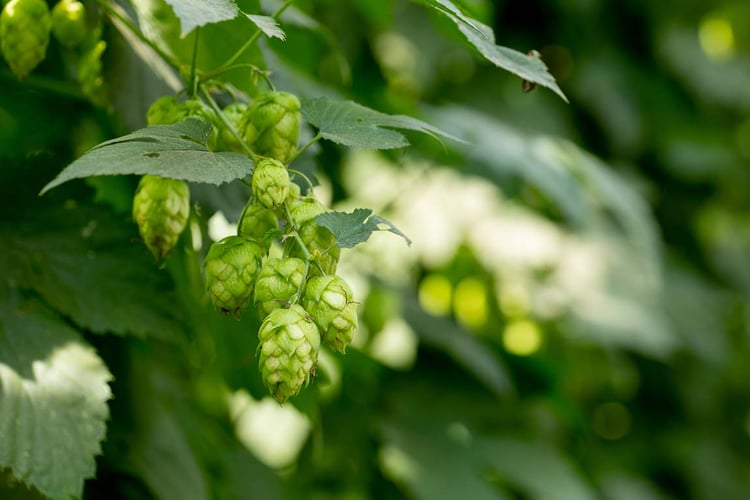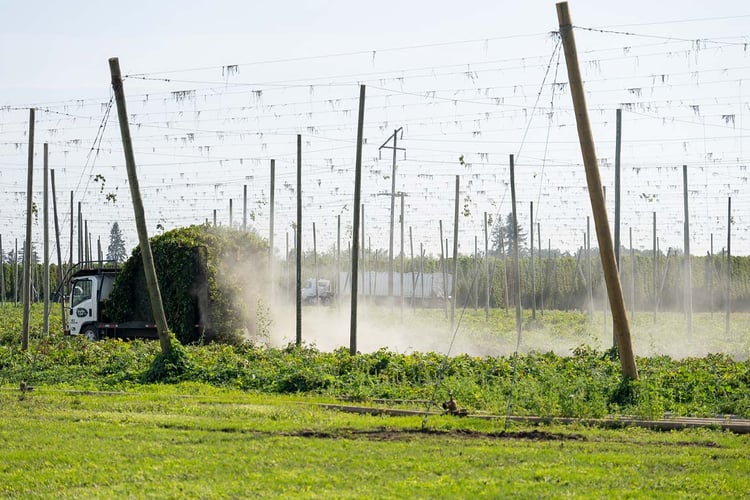Hop Contracting Is Changing – Does Your Approach Need To Change With It?
Every brewery, regardless of size, should know the ins and outs of hop contracting. Whether you’re an established brand or fledgling startup, hop contracts benefit nearly every brewery, and knowing the best practices is key to the ongoing success of your business.
However, the rapid growth and changing consumer demands that have reshaped the beer industry have also impacted hop contracting. Even for those breweries with experience contracting, the last few years have changed the way they must now approach and manage contracts.
While there is no substitute for a trusted partner to help you navigate hop contracts and how to use them to meet your brewery’s specific needs, this guide will walk you through the changing landscape and provide insight into today’s best practices.
Hop Contracting Used To Be More Predictable
Until fairly recently, contracting hops was much simpler, in part because it was much more predictable.
Go back 10 years or so. Breweries typically leaned into a few flagship beers that they complemented with seasonal offerings and the occasional new releases. And consumers reliably returned to a few select go-to brews. Not only did breweries keep a smaller, more consistent menu of beers, but that menu was also more balanced. They likely brewed an IPA and a pale ale, which were brewed from a core group of hop varieties grown in the Pacific Northwest.
All of this made hop contracting fairly predictable. While forecasting annual growth is never simple, breweries could confidently predict the hops they’d need to brew their beers. Contracts offered an easy way to ensure they could source the varieties and quantities required to maintain their operations.
Demand and Innovation Have Changed Hop Contracting

But that was then. The last decade has seen unprecedented growth and change across the beer industry. The rise of hazy IPAs in parallel with the proliferation of fruit-forward hop varieties has spawned a new generation of craft beer fans and booming demand for new breweries and beers. It has also redefined hop contracting in a couple of important ways.
- A rapidly changing consumer market: Today’s beer drinkers prefer variety to loyalty. They not only like to try different breweries but they also expect a constant stream of new releases from those breweries they patronize. This shift has created a competitive marketplace in which breweries are constantly developing and iterating recipes to stand out and capture consumer interest. This has fueled both incredible creativity and fleeting trends.
Whereas a market anchored by flagship beers allowed brewers to reliably forecast their hop needs three years out, today’s ever-evolving market makes long-term forecasting extremely difficult. To be flexible and nimble enough to respond to customers’ whims, brewers are shifting to contracting one year at a time. This ultimately has a ripple effect on availability.
When brewers rush to or from certain hops, growers change what they grow and how much of it. However, if tastes change mid-season, it can create a rush of demand where there is now no supply. That’s precisely what happened this year with Amarillo®. Demand for it dropped off last spring, so growers didn’t string as much of it. By harvest, Amarillo was suddenly back in forecasted demand, but because production had been reduced it quickly sold out.
- The need to innovate and differentiate: The explosion of new breweries and changing tastes have put pressure on brewers to develop new and interesting beers that will stand out in the marketplace. At the same time, the demand for hops and the popularity of new fruit-forward varieties has spawned breeding programs that are constantly introducing exciting new public and proprietary varieties.
Not surprisingly, brewers are eager to use these new varieties to both further their craft and help satisfy their customers’ desire for new beers. But the constant introduction of new varieties makes it hard for brewers to forecast their future needs and commit to a contract. Will they even want to brew with these hops in a year, or will they be on to the next great variety?
3 Myths About Hop Contracting
In spite of these changes, some of the same myths about contracts have persisted, preventing brewers from gaining a clear understanding of their benefits and risks. Here are three of the biggest myths and the truth behind each.
- Hop contracts are only for large breweries: This is one of the biggest misconceptions and the one that prevents many breweries from realizing the benefits of hop contracts sooner. For one reason or another, brewers often believe they simply don’t order enough hops to necessitate a contract.
The truth is that while nearly all hop contracts require a minimum purchase, they are modest. At Crosby, our minimum contract volume is 220 pounds per crop year, with an 88-pound minimum per variety. For a brewery with a solid IPA portfolio that uses heavy hop additions, that’s a low bar to clear. In general, if you’re brewing more than 300 barrels a year, you’re big enough to benefit from a contract. - Hop contracts are inflexible: While it’s true that contracts don’t offer the same flexibility as spot purchases, you’re not necessarily stuck if your needs change or extenuating circumstances arise. If you establish a close relationship with a quality supplier and regularly communicate changes in needs, many will actively work with you to ensure your contract remains a valuable asset.
- Hop contracts provide better pricing: Contracting your hops is not necessarily less expensive than sourcing them on the spot market. Breweries that contract a higher volume of hops receive discounts – for Crosby, discounts start at quantities of over 1,100 pounds.
It’s important to remember, however, that cost is not an advantage of hop contracting. Several other benefits have a significant impact on the business of your brewery and can ultimately have a positive influence on your costs, margins, and profits.
4 Benefits of Hop Contracts

While the changes previously outlined have added some complexity to hop contracting, they have not diminished the value of contracting high-quality hops that are essential to your brewery. Here are four primary benefits to hop contacts.
- Peace of mind and risk mitigation: Contracting hops provides peace of mind that your hop needs are secure for the brew year. Because many factors can affect availability on the spot market – from a sudden spike in demand to a poor harvest with low yields – relying solely on the spot market puts you at risk for not being able to source hops that are essential to your brewery. Contracts mitigate that risk by guaranteeing surety of supply.
- Consistency: When you buy on the spot market, even from the same supplier, you may get a different crop year from purchase to purchase. Because each year’s crop is distinct, there could be differences – higher or lower alpha acids, for instance – that can lead to inconsistent beer. Even when you get hops from the same crop year on the spot market, they may be from a different lot than previous purchases. Because different hop lots have different analytics, your beer could be affected.
When you contract hops, it’s for a single crop year – and we do all that we can to provide the same lots – ensuring consistency from one brew to the next. - Guaranteed pricing: Because they have fixed pricing for the life of the contract and will not fluctuate like the spot market, hop contracts provide predictable costing for your beers.
- An advantageous business relationship: Contracts shouldn’t be transactional. As a long-term relationship built on trust and understanding, contracts offer benefits you only get from a close partnership. While not every supplier is the same, here are some ways in which we’ve worked with contracted breweries that we’ve built relationships with:
- During the pandemic, some customers asked for help with contracts they couldn’t use and wouldn’t be able to pay. We worked with them in good faith to move significant portions of those contracts to the following year.
- When small breweries want to contract but aren’t confident in their needs, we can watch the market on a specific variety and let them know if supply dwindles and they should secure it now.
- If one of our contract customers encounters issues with hops they were supposed to contract through another supplier, we can work with them to cover the allotment.
- When a contracted customer communicates a change in needs (they need Amarillo rather than the Cascade they contracted, for instance), we try to accommodate that change. While we can’t solve every problem, the sooner we know about an issue and the further in the future that issue is, the greater the likelihood we’ll be able to help.
The Risks of Hop Contracting
While the benefits outweigh the risks, brewers need to be aware of potential pitfalls when contracting. Here are some of the more significant risks that can arise:
- Inaccurately forecasting your needs can leave you with a surplus of hops you don’t need, can’t store, and can’t pay for.
- Over-contracting can put you in a bad position, decreasing your flexibility and limiting recipe creativity and evolution.
- Consumer tastes can suddenly shift away from the hops you contracted.
- Being wrong for multiple years in a row can compound the above issues.
- Hop contracts require close communication between your production, finance, and sales/marketing teams to ensure the contract continues to meet the brewery’s business needs.
These are real risks. However, as noted above, they can often be resolved or even prevented when you work with a supplier that fosters a close relationship that encourages clear and ongoing communication.
Which Hops Should You Contract?

For many breweries, the idea of contracting their hops is appealing. However, determining which varieties they should contract and which they should purchase on the spot market is challenging. When thinking about which hops to contract, follow these tips:
- Consider contracting hops that go in your top-selling brands.
- Pay attention to acreage data for hops that are essential to your recipes. Secure those varieties if they are losing acreage since that will mean less supply on the spot market.
- Leverage the expertise of your account manager. Schedule quarterly calls to communicate your ongoing needs and discuss changes in the hop market.
- Compare anecdotes and information from different farms and vendors to create a full picture of the industry’s positions.
- Keep an eye on the spot market and secure important hops that are often sold out.
- Contract key hops that are difficult to substitute. For instance, you might be OK substituting Sterling for Saaz, but what about a truly unique hop like Strata®?
- Consider contracting varieties that you waste time tracking down – contracts save you from constantly having to scour the spot market.
- It’s often wise to contract key imported hops from countries such as Germany, the Czech Republic, New Zealand, and Australia. Without commitments from U.S. brewers, these hops will likely stay in their respective countries, and spot inventory will not be available outside those regions.
How To Plan for Contracting
Once you’ve made the decision to contract hops, you need to implement a plan that will ensure you secure the varieties you need without exposing you to unnecessary risk. This plan can vary based on your experience with hop contracts.
For breweries contracting for the first time:
Start by asking and answering questions that will provide insight into your hop needs:
How much beer are you going to make next year?
How much of that will be IPAs?
What are the top five hop varieties used in your IPAs?
What is the average pound per barrel you use for each of those hops?
How many hops did you go through last year?
What percentage of those went into flagship beers that you consistently brew?
What varieties do you need to secure? Which can you supplement with spot hops?
Of the hops you might contract, how much do you already have on hand?
Do you want to secure new innovation varieties that don’t have a lot of acreage?
Based on those answers, you should start to get a clearer view of which varieties, and how many of them, you may want to contract. As you continue to work through the contracting process with a supplier, keep these tips in mind:
- Play it safe – it’s easier to add hops to a contract than to take them out.
- Err on the side of caution and plan one year out. It’s hard to get in too much trouble contracting one year at a time – breweries get in trouble when they forecast poorly for years on end.
- Base your overall projections on 75% of your total hop needs. For each variety, contract 75% to 100% of what you think you’ll need based on two criteria:
- If it’s critical to your business, contract 100% of your needs.
- If it’s a less relied upon variety, contract 75% of your needs.
- If your volume needs are low, contract the bare minimum and reevaluate throughout the year.
For breweries that have previously contracted:
Having already gone through the exercise of forecasting and fulfilling a hop contract, you should be familiar with the process and may be capable of planning out beyond one year.
If so, consider using the stair-step approach, which allows you to cover your immediate needs and ensure some of your future ones while still providing flexibility in the event that things change. Here’s what contracting looks like with the stair-step approach:
- Upcoming year: Contract 75% to 90% of your needs.
- One year out: Contract 50% to 75% of your needs. As you get closer to the contract year, make additions as needed.
- Two years out: Contract 25% to 50% of your needs. As you get closer to the contract year, make additions as needed.
Whether you’re new to contracting or have previously held a hop contract, start the process as soon as you think you may have a need. Ideally, farmers and vendors like to have contracts firmed up by March, which gives farmers enough time to make adjustments in the fields based on demand.
What To Look for When Contracting With a Supplier

Not all hop contracts are the same and not all suppliers are alike. In choosing a vendor to partner with, be sure to consider:
- Quality: They should have quality standards that cover every step of the supply chain and provide a Certificate of Analysis for the hops you purchase. Consider using a vertically integrated partner that has control over every step of the supply chain – from growing and harvesting to pellet processing and shipping.
- A long-term partner: While contracts can run year to year, for the relationship with your supplier to be as beneficial as possible it should be a long-term commitment that keeps pace with your shifting needs and continues to grow alongside your business.
- A diversified portfolio: Look for a vendor with a portfolio with strengths that match your specific needs. Also take into account whether they use a diversified approach to sourcing their hops, which can help further mitigate your risk.
- Expertise: Choose a partner with expertise that’s respected across the industry. Give extra consideration to those you see at high-profile events or as featured speakers at guild meetings and trade shows.
- Responsiveness: Do they get back to you promptly and with the information you requested? You can tell a lot about the service you’ll get as a customer by how a supplier interacts with you during your initial conversations.
- Ease of ordering: Some suppliers have self-service portals that allow you to order hops anytime, anywhere and make managing your portfolio easy.
- Turnaround time: Ask how quickly your hops are shipped after the order is placed. Is it within three days, or can it be as much as 10 days?
- Values: If your values are core to your business, work with partners that align with your mission. Look for growers that use sustainable farming practices, champion causes, and are active within their local community and the craft beer community.
Evaluating Hop Contract Terms and What They Mean for Your Business
In addition to the above considerations, when working with a supplier it’s important to evaluate their contract terms and how they could impact your business. Here are some of the common terms you need to be aware of:
- Payment terms: The agreed-upon terms to pay for your contract. Be sure you know about cash in advance, net terms, or any other term a supplier may have as an option. This will help you to understand your cash flow situation and how to manage it.
- Down payment: A percentage of the total contracted balance due at a specified time to be used toward the purchase of hops in the future. Some suppliers offer both a down payment and installment options, and both have their advantages.
With a down payment, a percentage of your contract is paid in advance, reducing the amount you owe. A pay-as-you-go model, you’re not invoiced again until you pull from your contract. It’s ideal for customers who order in fewer, larger orders or all at once.
Installment plans break up the amount you owe over 12 months, helping to smooth out cash flow throughout the year. There’s no large down payment or final payment, just the same predictable payment every month, making it easy to budget. It works well for breweries that pull from their contract consistently.
- Final payment: This is the total dollars owed on any unshipped hops on contract. Know when your final payment is due and whether it gets shipped to you or the supplier keeps it in storage. If it stays in storage, you’ll likely incur a storage fee. To avoid those fees, have your supplier ship any remaining inventory to you.
- Storage terms: These outline any fees associated with the supplier storing your contracted hops. It’s crucial to understand your storage rates to avoid unforeseen charges. Know when storage fees start and if there are extended storage fees (fees that increase over time).
- Finance charges: These are charges on past due balances not paid within net terms. Finance charges are typically a monthly interest rate. It varies by supplier, so be sure to ask whether they charge past due balances and finance charges.
- Default remedies: If you default on your contract, what happens next? There is no industry standard, it’s specific to each company, so ask what steps the supplier will take to recover past-due balances.
- Availability timelines: When are your hops going to be ready? Northern and Southern Hemisphere hops have different availability timelines based on harvest, processing timelines, and logistics. Differences exist for non-U.S. hops, too. It’s critical to be in communication with your supplier to avoid surprises.
- Exchange rate considerations: There will be an exchange rate conversion at least once a year. Your price per pound can fluctuate based on changes in the currency exchange rate.
Ultimately, know what matters most to you. If your sole concern is cost, that’s a pretty straightforward decision. Otherwise, list your top three factors in working with a hop supplier, then weigh how each vendor satisfies those factors while taking into account other areas in which they provide added value.
Contracting has changed. What hasn’t changed is the importance of choosing a strong partner to contract with. Building a strong, long-term relationship that emphasizes flexibility and ongoing communication is often the biggest factor in ensuring your hop contract covers your needs.

